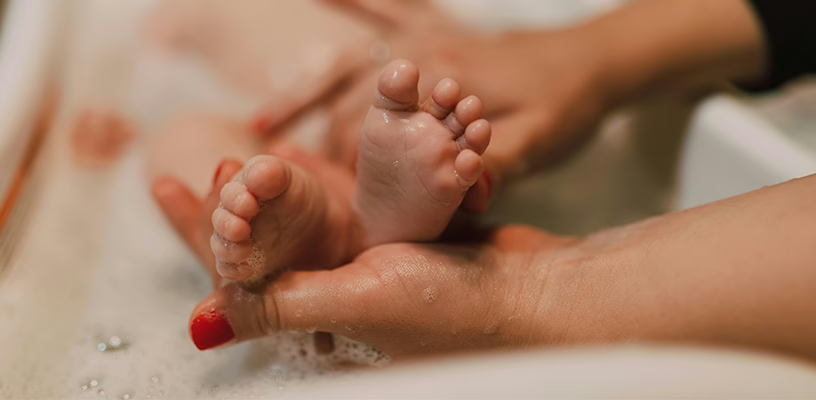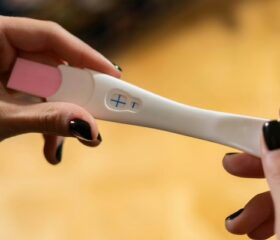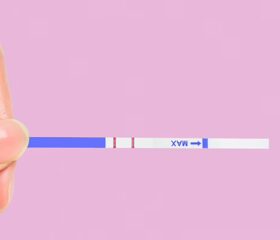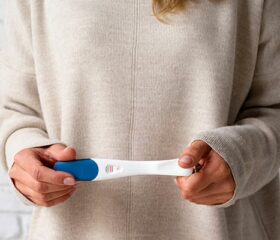Babinski Reflex: What It Means and How to Test It
Unless you’re around babies a lot, you probably aren’t familiar with the Babinski reflex, which older children and adults no longer exhibit.

As a new parent, your baby’s every little move is like a gift. You may sometimes gently tickle or stroke him to elicit those adorable tiny twitches. Amidst all the fun, it’s also important to check that all of his reactions are normal and indicate his neurological development is on track.
You may have heard doctors or experienced moms singling out a specific newborn reflex—the Babinski reflex. What exactly is it, and what does it tell you about your baby’s health? When will this reflex disappear, and what does it mean if it persists? Read on to find out.
What is the Babinski reflex?
Also known as the plantar reflex and the Babinski sign, the Babinski reflex is a natural response that occurs in babies and young children when the soles of their feet are stroked.
It was first described by Joseph Babinski, a French neurologist, in the late 19th century. Since then, this reflex has become a standard part of neurological examinations, especially in infants.
To conduct the test, your doctor takes a finger or tool and firmly strokes your baby’s sole from the heel up to the toes. This stimulation triggers a reaction in children under 2 years old: the big toe bending upwards while the other toes fan out.
Older children and adults usually don’t have this reflex. If they do, it can sometimes signify a nerve problem. 1
Why do babies have the Babinski reflex?
Babies have the Babinski reflex because their nervous systems are still developing. 2 The reflex shows that signals are being transmitted effectively from the brain to the spinal cord and then to the muscles in the foot. In other words, it means the lines of communication are open and functioning.
As your baby grows into a toddler, his corticospinal tract (the neural pathway connecting his brain to his spinal cord) will mature, and the Babinski reflex will disappear. You can expect it to fade when your baby is between 12 months and 2 years old. 1
Related reflexes
The Babinski reflex is one of the many newborn reflexes that doctors assess during a baby’s first checkup. Don’t confuse it with other, similar reflexes in babies, such as the:
- Plantar grasp reflex (toes and forefoot flexing; usually disappears by 9 months old)
- Palmar hand grasp (hand gripping a finger; usually disappears between 4 months and 6 months old)
These reflexes are all distinct, although they manifest for similar reasons, and doctors test for all of them in more or less similar ways.
How to check for the Babinski reflex at home
While your pediatrician will probably check for your baby’s Babinski reflex, if you’re interested, you can test it at home, too. Here’s how to do it:
- Gently stroke the sole: Use your finger to gently stroke the bottom of your baby’s foot from the heel towards the toes. Go along the outer edge of the foot in a “J” shape, avoid touching the middle of the foot, and avoid tickling.
- Observe the response: Watch for the characteristic Babinski sign: the big toe extending upwards and the other toes spreading out.
Don’t be alarmed if you don’t elicit the response every single time. Your baby is probably healthy even if the reflex doesn’t get triggered by every stimulation.
Testing for the Babinski reflex takes quite a bit of skill, and if you don’t perform the test correctly, you may trigger the plantar grasp reflex instead, which is completely normal.
Of course, if you’re worried, you can bring it up with your doctor during your next well baby visit to get some peace of mind.
What does it mean if the Babinski reflex persists (or is otherwise abnormal)?
When you stroke the sole of a child over 2 years old, the normal response is quite different from the Babinski reflex. Usually, you’ll see the toes curling downwards, as if trying to grab something. 2
If an older child or adult exhibits a positive Babinski sign, that can indicate an underlying issue with the central nervous system.
What are the potential causes of an abnormal Babinski reflex?
Certain medical conditions can cause a positive Babinski reflex in children over 2 years old (and in adults).
We’ve listed these conditions below. It’s worth noting that most are rare, and the most common cause for a “late” Babinski sign is an improperly conducted test.
With that said, the possible medical causes include: 1
- Stroke
- Brain injury, tumor, or viral infection
- Spinal cord injury, tumor, or defect
- Meningitis
- Multiple sclerosis (MS)
- Amyotrophic lateral sclerosis (ALS)
To reiterate, a “late” Babinski sign doesn’t automatically mean your baby has any of these issues. He needs further testing and neurological evaluation. The point is that you should get him checked out.
Watch out for an "asymmetrical" Babinski reflex
It’s also worth visiting your doctor if your child’s Babinski response is different between the feet (i.e., if his left foot and right foot respond noticeably differently). This can also be a sign of possible problems that need to get checked out by a professional.
What should you do if you notice an abnormal Babinski reflex?
If you’re concerned about your baby’s reflexes or notice a positive Babinski sign in an older child, consult a doctor right away. Don’t try to diagnose the problem yourself.
As mentioned, when you see your doctor, they’ll perform a thorough neurological examination and order tests to determine the cause. As with other illnesses, catching it early is the key to managing any underlying neurological conditions.
Final thoughts
When your baby’s Babinski reflex makes those tiny toes of his wiggle, take it as a sign that he’s healthy.
Needless to say, if you suspect anything’s wrong, give your pediatrician a call right away, but otherwise, make sure to savor this stage. Time moves quickly with a newborn, and before you know it, the Babinski reflex will be just another fond memory.
Article Sources
- MedlinePlus. "Babinski reflex" Retrieved September 23, 2025.
- Michigan State University. "Reflexes: Abnormal Findings" Retrieved September 23, 2025.







